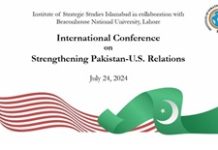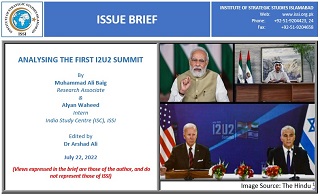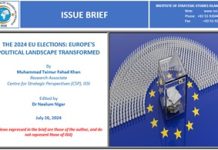Introduction
On July 14, 2022, the first virtual summit of leaders of the United States (U.S.), United Arab Emirates (UAE), Israel, and India was held amid a scheduled visit of the U.S. President Joe Biden to the Middle East. This new format is referred to as I2U2 representing the first letters of the names of the four countries. It is a continuation of talks between foreign ministers of the U.S., UAE, India, and Israel that was held in October 2021. At that time, it was referred to as “International forum for Economic Cooperation” but now it is officially called I2U2. In October 2021, the UAE called the virtual meeting of foreign ministers of four countries as the West Asian Quad. After the first I2U2 summit, the Indian Prime Minister Narendra Modi stated that “the agenda and vision of I2U2 is both progressive and practical.” While commenting, Israeli PM Yair Lapid called this new group as “correct model.”[2]
Background of I2U2
I2U2 was initiated in October 2021 when the Indian External Affairs Minister S. Jaishankar visited Israel where he met with his counterpart while the foreign ministers of UAE and U.S. joined them virtually. The main driving force that led to the formation of the new Quad is the Abraham Accords. The latter was signed in August 2020 which normalized the relations between Israel and three Arab states including UAE, Morocco, and Bahrain.[3] Israel and the Arab States were arch-rivals but after the historic Abraham Accords, the politics of the Middle East have greatly transformed. It substantiates the statement of British Prime Minister Lord Palmerston that “in international relations, there are no permanent friends or foes. Only thing that is permanent is interest.”[4] The I2U2 is also stated as the initiative of Israel to enhance its relations with the UAE by entering into a formal agreement.
















